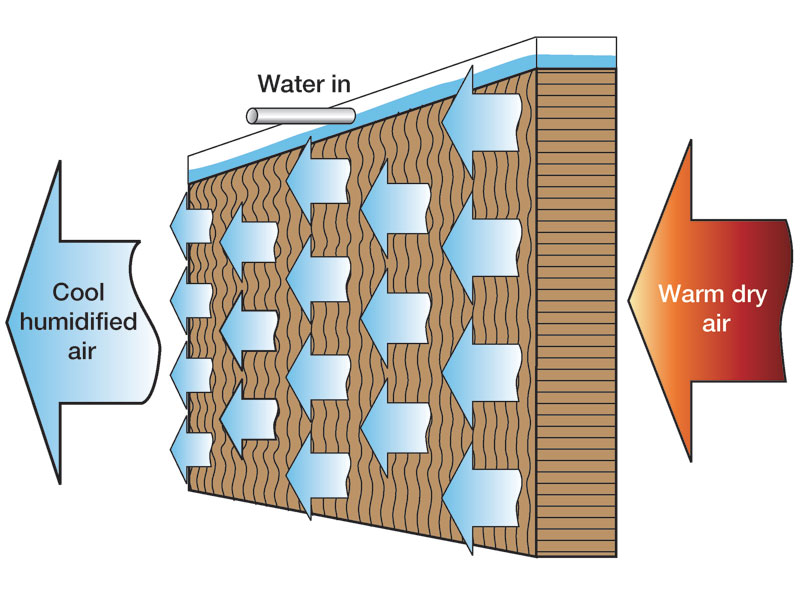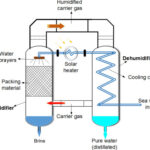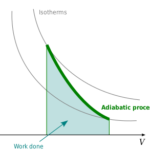Evaporative cooling is an adiabatic process, that is, there is no net heat loss or gain. When hot air stream is made to pass through wet spray, the sensible heat of air vaporizes the water and the air’s dry bulb temperature will fall. The sensible heat used to vaporize the water enters the air as latent heat in added vapor; thus no heat is added or removed. Wet-bulb temperature remains constant.

The evaporative cooling process is commonly employed to reduce the dry bulb temperature of the air without refrigeration. It is a constant wet bulb process of reducing dry bulb temperature. The hardware used to achieve this process usually consists of the basic components of the adiabatic saturation chamber plus some type of device to amplify the interface surface area between the water reservoir and the air, such as wetted wick, matting, plates, spray, etc.
Example
Evaporative cooling uses heat contained in the air to evaporate water. Air temperature (dry-bulb) drops while water content (humidity) rises to the saturation point. Evaporation is often used in hot weather to cool ventilation air. The process moves upward along the line of constant enthalpy or constant web-bulb temperature, for example, from point D to point E in Figure below. Notice that hot dry air (points D to E with a 24°F temperature drop) has more capacity for evaporative cooling than hot humid air (points F to G with only a 12°F temperature decrease).
Solution
Refer the plot below:

Evaporative cooling process with hot dry air from points D to E and with hot humid air from points F to G. Notice greater evaporative cooling capacity with dry air.
Observable features of the evaporative cooling process are:
v Constant wet bulb temperature
v Decreasing dry bulb temperature
v Increasing humidity ratio
v Increasing dew point temperature
v Increasing vapor pressure
v Essentially constant enthalpy
v Decreasing specific volume
v There is no loss or gain of heat within the system because the amount of sensible heat removed equals latent heat added to the water.
A typical evaporative cooling process is the direct conditioning of air for human comfort conditions in hot-dry climates and other applications where sensible cooling effects are desired and increasing humidity ratios can be tolerated.
This method adds moisture to the air stream while cooling it, and so would be useful in dry and arid regions where the warm air has a low humidity. The result of evaporative cooling is air that is cooler and more humid, and a surrounding that is dryer. For this reason, the process of evaporative cooling is sometimes referred to as drying.


